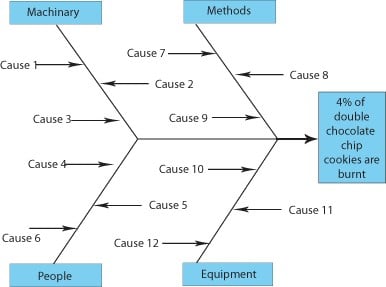The length and variability in today’s cold chain, combined with ramped-up regulatory pressures in food safety, are challenging food and beverage (F&B) distributors to ‘up their game’ in multiple areas.
A single customer may receive hundreds of products in a shipment, for example, and each must be loaded to prevent cross-contamination, physical damage, out-of-range temperature variation, and product loss. Considering the length and complexity of food supply chains, there are plenty of opportunities for errors.
What does this mean for your distribution business? It means there are 5 things a food service delivery system should do:
- Regulatory compliance
- Raw materials management
- Hazardous material handling
- Approval and tracking
- System validation
Regulatory Compliance
F&B distributors must comply with a broad array of federal and state regulations. Regulations include food quality issues and food quality tracking as well as non-food regulations like the California Air Resources Board’s (CARB) limits on vehicle emissions and pollution.
Such was the case for DBI Beverage, Inc. CARB recently fined the distributor more than $100,000 for exceeding California’s air quality limits, despite the company having no history of past violations.
How MTC Food One Helps: Whether it’s for compliance with 21 CFR Part 11 Electronic Signatures and Electronic Records, CARB, HACCP, or future regulations, MTC’s Food One module for ERP ensures you remain compliant by providing full insert and documentation control as well as documentation reporting. Food One also incorporates history and process functionality (e.g., lot control and tracking, incubation/expiration date management, and stock rotation) to ensure you follow all required processes correctly.
Raw Materials Management
The need for ERP systems to manage raw materials has gone beyond basic warehouse knowledge of material inputs locations. While it’s still essential to know the location and availability of inventory and where raw materials are in the production process, you also need to understand and control many other aspects of raw materials – all the way down to the batch level.
How MTC Food One Helps: Food One incorporates a wide range of raw materials management capabilities, including issuing and tracking support, potency control, catch weight capabilities, the ability to convert material from one unit of measure to another, and simplified handling for a diverse range of products.
Hazardous Material Handling
Did you know the EPA – in addition to the FDA – can fine food distributors? That’s what happened in 2017 when distributor Performance Food Group settled with the EPA for $184,717 for violating Section 112(r) of the Clean Air Act. According to the EPA, “An EPA inspection identified potentially unsafe conditions relating to the ammonia refrigeration process, including that the facility had not filed a ‘risk management plan’ as required, based on its storage and handling of about 10,000 pounds of anhydrous ammonia.”
How MTC Food One Helps: Using MTC’s Food One, distributors can document, update, and maintain multiple and ‘latest’ versions of compliance plans, including DEA documentation reporting. In addition to compliance issues in hazardous material handling, Food One provides functionality to identify, store, label, and automate procedures for handling high-risk or incompatible products.
Approval and Tracking
Approval and tracking are core to understanding your end-to-end cold chain and customer outcomes. As such, MTC has developed automated procedures for approval and tracking needs. For example, Food One’s two-way reefer management and control allow you to manage all your refrigerated trailers and cargo remotely. You gain improved management of accessorial costs, remote pre-trip operations, and advanced temperature compliance, with the latter incorporating both temperature monitoring analytics and “proof of temperature” compliance.
System Validation
As government regulators, consumers, and your customers grow increasingly strict regarding the quality and traceability of food and food handling by distributors, you need to ensure you can provide transparency in everything you do. In support of that goal, Food One enables its customers to meet these rigorous requirements through software development driven by our ISO 9001-certified process and testing.
Conclusion
When food and beverage distribution companies add Food One to their ERP, they modernize their food service delivery system to keep up with evolving and stringent market demands. To learn more, contact us today.










Leave a comment